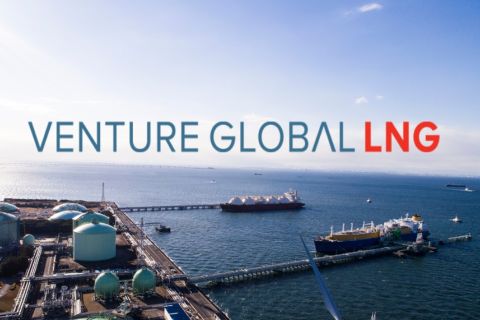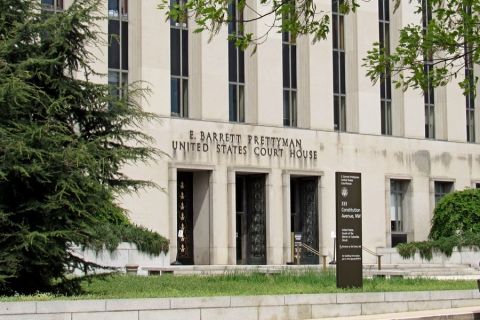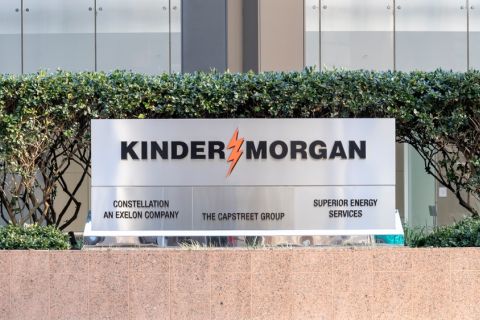AWE Limited is pleased to report on the significant progress made in assessing the potential of the Perth Basin Shale Gas play. The assessment has now identified a very large potential gas resource in one of three key shale sequences in AWE’s acreage holding in close proximity to one of Australia's key domestic gas markets.
In particular, following the analysis of the Woodada Deep-1 core results, AWE estimates that the middle interval of one of these shale intervals (the Carynginia Shale) alone holds a gross Gas in Place of 13-20 trillion cubic feet (Tcf).
AWE now holds a position in approximately 1 million gross acres of prospective Shale Gas acreage in the Perth Basin (620,000 net acres), with high levels of equity in the majority of the permits and licences. Importantly, AWE also operates the majority of this prospective acreage, and will therefore manage the pace of future activity across the prospective play.
The Perth Basin Shale Gas Opportunity
AWE has been reviewing the prospectivity of shale gas in the Perth Basin area for the past 2 years, and has substantially progressed the understanding of the potential in the region.
Initial core analysis from the Woodada Deep-1 well taken earlier in the year has highlighted the potential of the middle interval of the Carynginia Shale, where its characteristics are comparable to some productive shale units in the USA.
Further work will be required to ascertain the commercial viability of these shales within the Perth Basin. However, AWE is encouraged by the progress to date and plans to aggressively pursue further investigations on these opportunities.
Importantly, the commercial viability is substantially assisted by the proximity to existing infrastructure and the strong prevailing demand for, and pricing of, gas in the WA domestic markets.
In AWE’s view, the strong commercial drivers apparent in the Perth Basin could allow this Shale Gas opportunity to provide Australia’s first commercial venture in the growing global phenomenon of “unconventional” Shale Gas production.
Background on the Perth Basin Shale Gas Opportunity
AWE has defined three different Shale Gas targets in its Perth Basin acreage: the Carynginia Shale, Kockatea Shale and the Irwin River Coal Measures.
Carynginia Shale
Following a review of historical well data in the area, the Carynginia Shale was initially identified as the primary Shale Gas target in the Perth Basin. Further literature research, past wireline logs, core and well cuttings, along with AWE’s experience from production operations in its Shale Gas acreage in the USA (Eagle Ford Shale leases), were used to confirm the significant potential.
In April 2010, AWE undertook a coring and logging program across the Carynginia Shale in the Woodada Deep-1 well. The Carynginia Shale in this area is over 280 metres thick and in the target area ranges from depths of 2,500 to 3,500 metres. The Carynginia Shale has three distinct intervals, and a core was taken in each of these intervals in the Woodada Deep-1 well. Typically a fracture stimulated horizontal well would only access a gross 100m interval, so the objective was to determine the optimal intervals for further appraisal.
Specific logging tools designed to measure shale parameters were also run in the well. Upon retrieval of the cores, significant quantities of gas were desorbed from each of the cores, supporting the view that this shale contains gas. Compositional analysis has shown gas samples from the core to be dry gas, predominantly consisting of methane and small quantities of ethane, liquefied petroleum gas and carbon dioxide.
Core analysis was undertaken at the TerraTek laboratory in Salt Lake City, recognised experts in the field of Shale Gas analysis in the USA. From this work, the middle interval of Carynginia Shale was high graded as a target for further evaluation as it has ideal fracture stimulation parameters and a log signature analogous to some productive gas shales in the USA.
By correlating the core analysis with log data from the existing wells, AWE estimates that this this middle interval of the Carynginia Shale may hold Gas in Place of 13-20 Tcf within AWE’s acreage holdings. The US shale industry estimates recoveries of greater than 20% of Gas in Place and therefore in the event of successful flow testing, the recoverable reserve potential of this key area could be higher than 4 Tcf of gas.
This gas potential of the middle interval is further supported by a drill stem test in the Arrowsmith -1 well located 25 km from Woodada Deep-1 in the EP 413 permit. This test was estimated to produce gas at rates as high as 4 million cubic feet per day without fracture stimulation, before subsequently declining.
From the results of the Woodada Deep-1 core data, the Carynginia Shales of the Perth Basin demonstrate a reasonable correlation with successful commercially developed USA shales, based on a number of key parameters, particularly depth, target thickness and mechanical (ability to fracture) properties. In the case of other parameters, particularly porosity and total organic carbon content, the Carynginia Shales have modest properties at this location. Geological studies are underway to assess the play fairway of Carynginia shales where these properties might further improve commercial returns.
United States Shale vs. Perth Basin
Barnett | Woodford | Marcellus | Eagle Ford | Haynesville | Carynginia (Perth) | |
Depth, Top (m) | 2,000 | 1,800 | 1,200 | 2,700 | 3,200 | 1,600 |
Depth, Bottom (m) | 2,600 | 3,400 | 2,600 | 4,000 | 4,100 | 3,200 |
Thickness (m) | 30-180 | 35-70 | 15-60 | 30-90 | 60-70 | 60-90 |
TOC (%) | 4.5% | 1-14% | 3-12% | 3.0-4.7% | 3-5% | 1-4% |
Total Porosity (%) | 4-5% | 3-9% | 10% | 4-6% | 9% | 3-6% |
Young’s Modulus (psi x 10^6) | 1.6-6.5 | 4.0-6.0 | 3.7-5.0 | 0.6-2.2 | 3.3-4.0 | 3.0-5.0 |
Poisson’s Ratio | 0.21-0.27 | 0.10-0.30 | 0.20-0.26 | 0.22-0.26 | 0.24-0.26 | 0.13-0.23 |
The upper and lower cored intervals of the Carynginia Shales were proven to have higher clay contents than seen in successful US shales. However fracture stimulation properties were very good and these intervals will be further evaluated in future wells as secondary objectives.
Importantly, the results of the work undertaken in the Woodada Deep-1 well are not seen to exclude the potential of the shales across the entire acreage holding.
AWE is currently working with the operator of the EP 413 (AWE 44.14%) permit to design a well to test the potential of the shales of the Arrowsmith area. It is planned to drill this well during the 2nd quarter of 2011.
AWE is also undertaking planning for a test fracture stimulation of the middle Carynginia Shale, which was cored in the Woodada Deep-1 well. This stimulation work is planned for 2011.
Kockatea Shale
The Kockatea shales are extensive across the basin and up to 600 metres thick in AWE’s acreage. These shales are the proven source rocks for the oil & gas fields in the Perth Basin. The initial work by AWE highlighted a 50 metre target interval with higher organic content in this shale that exhibited properties that might support Shale Gas production.
In May 2010, AWE participated in the drilling of the Redback-2 exploration well, a conventional gas exploration well in Permit EP 320/L11. The joint venture undertook a coring program over the target interval of the lower section of the Kockatea shale in the well to assist in understanding the nature and characteristics of these shales in the area. Although gas was desorbed from the core, subsequent analysis appears to indicate that the high clay content in the cored Kockatea section may be detrimental to effective gas recovery.
However, AWE is currently undertaking geological studies to determine the extent of the oil, wet gas and dry gas windows on the Kockatea Shale for high-grading more prospective areas within AWE’s acerage.
Irwin River Coal Measures
The third zone of interest in the Perth Basin is the Irwin River Coal Measures, a formation that contains both Shale Gas and tight Sandstone Gas targets.
Well data confirms that the Irwin River Coal Measures extend across the entire North Perth Basin and are recognised to generate gas. This formation had previously been disregarded as a commercial conventional target, as the formation was considered too tight to produce commercial quantities of gas. However in 2009, AWE fracture stimulated the vertically-drilled Corybas-1 well (AWE 50%) to test this formation as an “unconventional” play.
In April 2010, the well was connected to the Dongara processing facility and began producing at initial rates over 4 million cubic feet of gas per day. At end October 2010, the well was producing at a commercial rate of 1.2 million cubic feet per day.
The results of this flow test are very encouraging and support the view that an optimally designed fracture stimulation will liberate commercial gas flows. AWE believes that the implementation of best completion practices, drilling horizontal wells which are multi staged fracture stimulated, could achieve significantly higher production rates and recoveries.
In light of these results, AWE has undertaken a reinterpretation of the existing seismic with the main aim of this work to assess the gas resource potential of Corybas and nearby structures, and identify follow up drilling opportunities. Further seismic acquisition is under consideration, whilst the joint venture is also discussing further development options.
Next Steps
AWE expects to complete incorporation of the detailed core analyses into its comprehensive geological models for all three Shale Gas targets in the Perth Basin in the first quarter of 2011.
These models will high-grade target areas for undertaking a drilling campaign from the middle of 2011, encompassing a significant coring and logging program to fully appraise the extent of three targets across AWE’s acreage and most importantly, to enable the design and implementation of horizontal well fraccing programmes to establish production rates to support subsequent commercial development.
Recommended Reading
Court Petitioned to Intervene in Calcasieu Pass 2 LNG Project
2024-09-09 - The D.C. Circuit is to consider the case for Venture Global's Calcasieu Pass 2 LNG facility in Louisiana.
Appeals Court Strikes Again, Sends Pair of LNG Permits Back to FERC
2024-08-07 - Glenfarne and NextDecade, whose South Texas LNG projects were sent back to FERC by the D.C. Appeals Court, are among companies planning responses to the ruling.
Texas Needs More Natgas Pipes as Prices Turn Negative Again
2024-07-31 - Spot gas prices for July 31 at the Waha hub in West Texas turned negative for a third time in July even as a record-breaking heatwave could boost U.S. power demand to an all-time high later this week as homes and businesses crank up their air conditioners.
Despite 2Q Earnings Miss, Kinder Morgan Plans Gas Capacity Growth
2024-07-18 - Kinder Morgan's second quarter earnings fell short of expectations due to recent low gas prices, but remains bullish on natural gas demand and is moving ahead on projects in the Southeast U.S. and Williston Basin.
Segrist: Gassed Up, Waiting to Go: Producers Aim to Remedy Gas Prices
2024-07-31 - The countdown clock for a surge in natural gas demand is ticking. Is the U.S. finally at the turning point?




